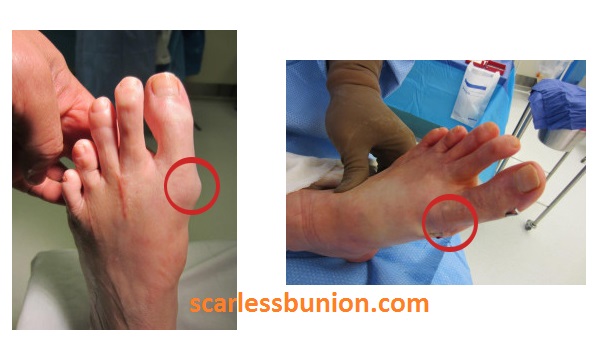Classification of Bunions
The exact reason why we form bunions is still unknown, but constantly wearing ill-fitting shoes is one factor that can cause bunions. Tight pointy shoes can compress the feet and toes which could lead to the formation of bunions. This is the reason why bunions are particularly common in women. Having a family history of bunions also plays a major role in the formation of condition. Genetic weakness in the structures of the feet causes the joint to deviate outwards causing bunions in children, even without chronic exposure to shoes.
Typically, bunions are classified mild, moderate, severe, and severe with arthritis.

Mild bunions are in the initial stages of bunions. These form a slight or small bump and usually do not cause any pain.
Moderate bunions exhibit an obvious bump and can cause mild to severe pain. This is basically due to irritation while wearing shoes or accidental bumps.
Severe bunions have a really obvious deformity where overlapping of the first and second toes are common. Pain is mild to severe due to the same irritation caused in moderate bunions.
Bunions with arthritis can cause severe debilitating pain. Arthritis form in the metatarsophalangeal joints due to constant trauma to the bunion.
Treatment
Mild and moderate bunions can be treated successful by the use of non-surgical means and reduce associated bunion pain. This can be accomplished by using custom made orthotics, wearing profiting shoes and pain medications.
In severe bunions, if all conservative means no longer work, including steroid therapy, then surgery may be suggested. Minimally invasive bunion surgery is the recommended surgical technique for bunions since it involves very minimal pain and swelling; hence, having fast recovery times.
For bunions with arthritis, if the joint is severely damaged, which is commonly seen in arthritic joints, it may be replaced with an artificial joint, or a joint can be fused together.
Call now for more information on
minimally invasive bunion surgery
(239) 430-3668 (FOOT)
or sign up for our newsletter